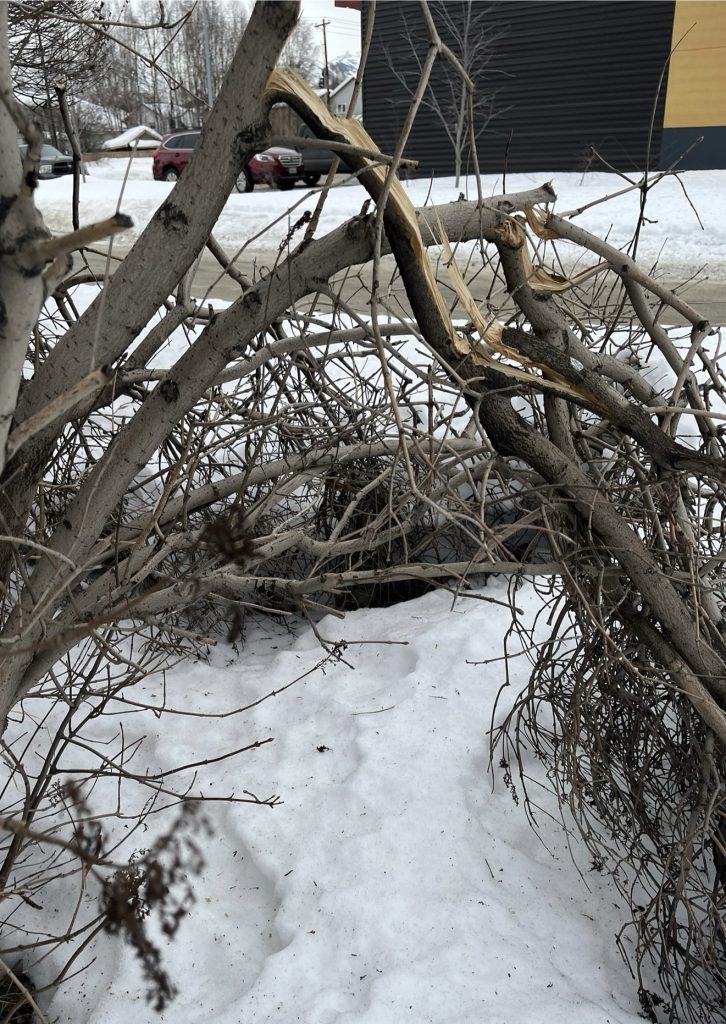Following winter, the damage from heavy snow loads and winds becomes obvious as the snow melts to reveal cracked branches and split trees. With last week’s heavy melting, damage is already popping up. The extent can be alarming, particularly as ornamentals like lilacs and Amur chokecherries are among the shrubs and trees most affected here in Alaska landscapes. Stress from injury can result in late growth, leafing out, and flowering. In some cases the damage is too extensive for much to be done, but for most, utilizing restorative pruning techniques can aid in the tree’s recovery, ensuring the vitality of your shrubs and trees for years to come. Other pruning measures such as rejuvenation pruning and reducing density/thinning can help prevent damage and protect your landscape. In this guide, we’ll explore what restorative and rejuvenation pruning entail and provide actionable steps that can be taken to effectively manage your trees post-damage. Whether from storms, animals, topping, or winter snow loads, this guide will help you get your trees back in ideal shape.
Understanding Restorative and Rejuvenation Pruning
Arborists, when developing a plan for pruning, identify goals for trees or shrubs. Restoration and rejuvenation are examples of some common goals.
Restorative pruning involves selective removal of damaged, diseased, or overgrown branches to improve the structure, health, and appearance of a tree. This process not only aids in the tree’s recovery from storm or other damage but also promotes its long-term growth and resilience.
Rejuvenation pruning, on the other hand, focuses on revitalizing older or neglected trees by removing deadwood, thinning crowded branches, and promoting new growth. It encourages the tree to produce fresh, healthy foliage, enhancing its overall vigor and appearance.
Identifying Damage
Before embarking on any pruning activities, it’s essential to assess the extent of damage to your trees. Look for signs such as broken branches, split trunks, torn bark, and leaning or uprooted trees. Pay attention to any hazards, such as dangling limbs or branches entangled in power lines, and prioritize safety when addressing these issues. Especially following storms, when larger trees can be affected.
Tools and Safety Precautions
Equip yourself with the necessary tools for pruning, including hand pruners, loppers, pruning saws, and safety gear such as gloves, safety glasses, and sturdy footwear. For larger trees or extensive damage, consider hiring a professional arborist to ensure the job is done safely and effectively.
Pruning Techniques


When pruning your trees and shrubs, it’s important to know two types of pruning cuts: the removal cut and the reduction cut. A removal cut is the removal of a branch back to a parent limb, where a reduction cut is used when damage to a main limb occurs and the main limb is cut above a smaller limb. Ideally the smaller limb is at least ⅓ the size of the main limb. Diagrams are above illustrating these two types of cuts. In a reduction cut, it’s important to find the branch collar (the swollen area where the branch attaches to the trunk) and make your cut right outside of it. This helps prevent further damage and promotes healing, as specialized cells exist in this area that aid defense against decay. Photos of some branch collars, along with the proper cuts, are provided below for help identifying them. I’ve marked the cut in red, with the branch collar and branch bark ridge in black. I know it doesn’t look like much at first, but the more you look at branches, you’ll pick it up no problem!
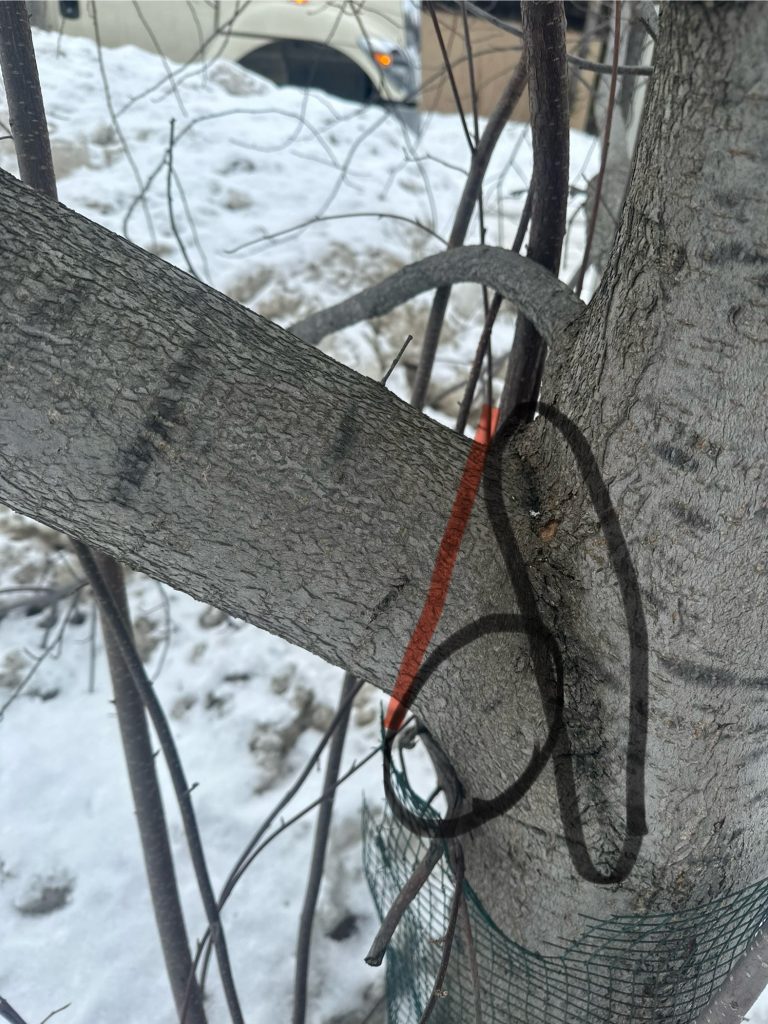
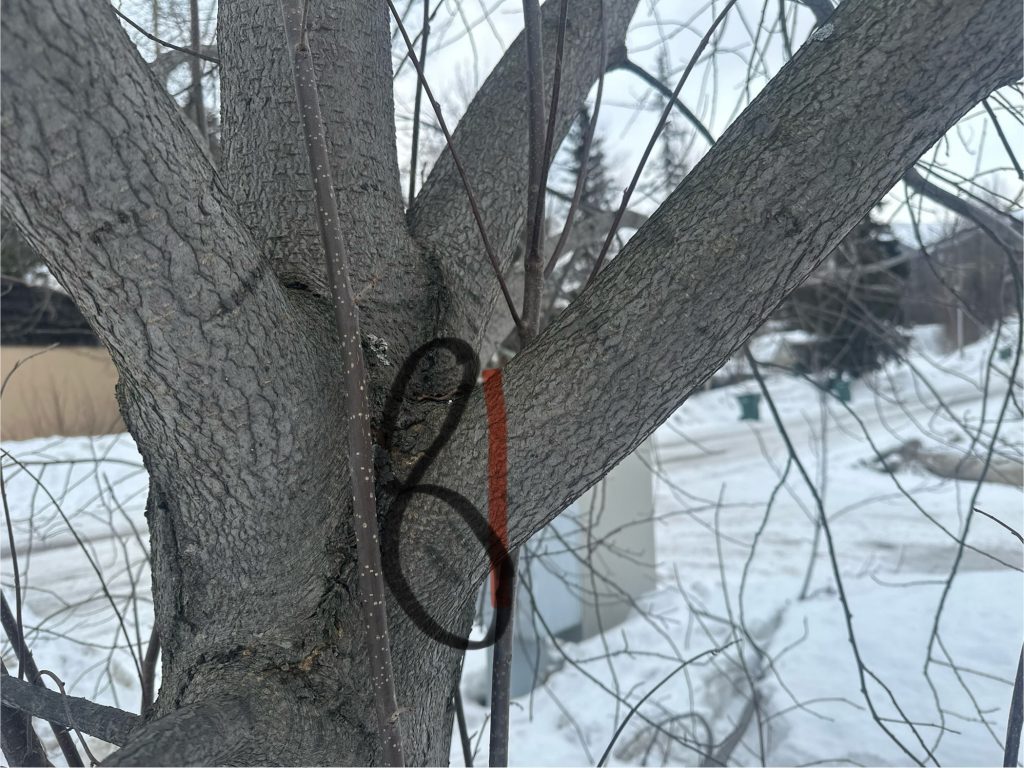
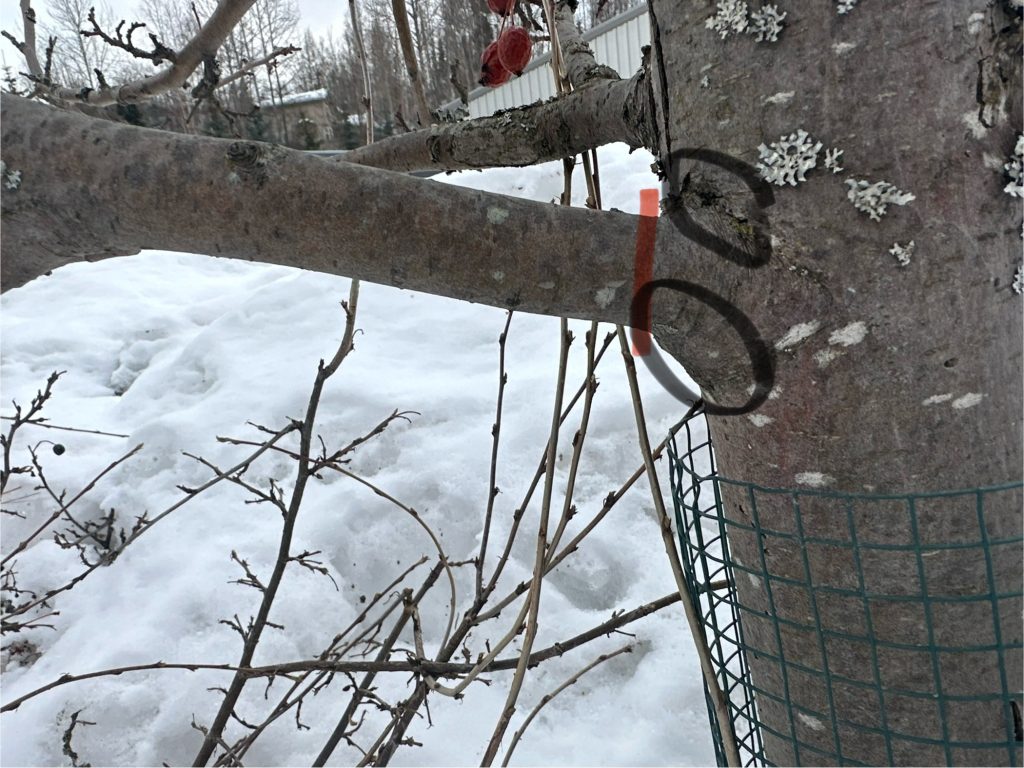
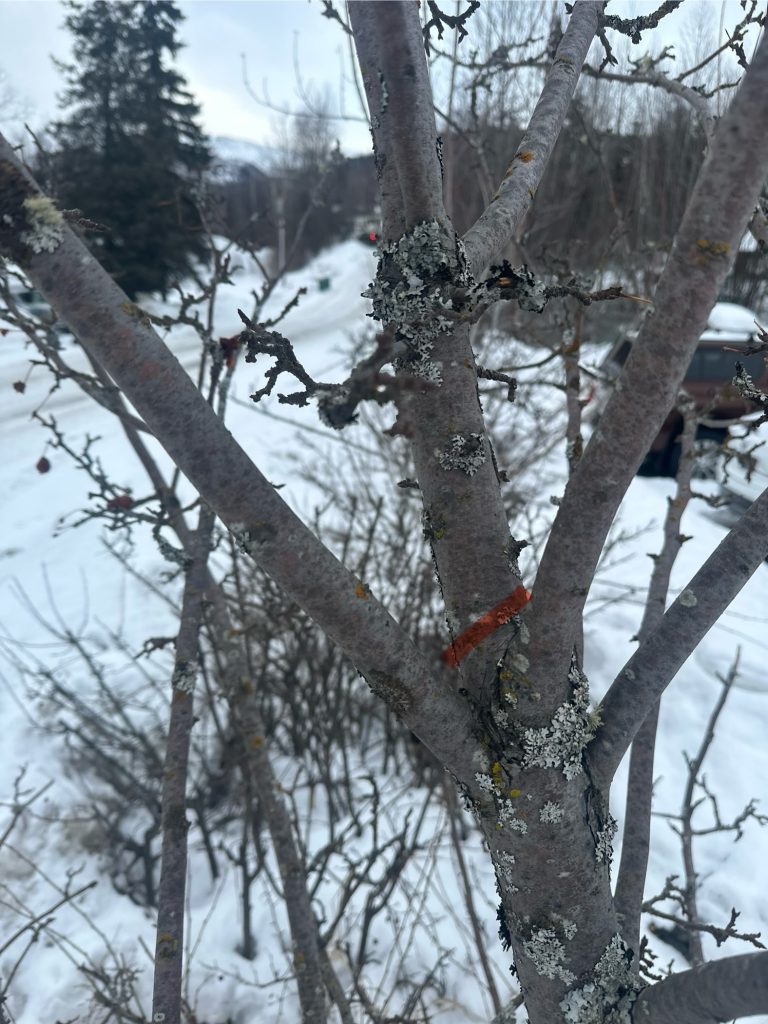
Using the two types of cuts as illustrated, first remove broken or hanging branches, as well as any dead ones. Dead branches will lack leaves, be brittle, and may have colored spots on them from decay fungi. Removing damaged or diseased branches through restorative pruning helps the tree allocate resources towards healing and regeneration, reducing the risk of infection and decay.
Following damage and in preparation for damage, the following techniques are useful for additional pruning:
Thinning (Reducing Density) and Crown Reduction: Use aforementioned cuts to selectively remove crowded or crossing branches, allowing for better air circulation and light penetration within the canopy. Crown reduction may also be necessary to reduce the tree’s overall size and weight, particularly if it has suffered extensive damage. This is particularly important for lilacs, and similar small to medium sized ornamentals, as they’re the most common victims of heavy snow loads. For trees, Amur chokecherries and Canada Red chokecherries have similar problems. Their high branch volume and density relative to branch diameter make them easy to snap. The older the tree, the more damage is possible, but for younger trees the damage can seem more severe. Fortunately, younger trees are easy to train.
For rejuvenation pruning, the goal is to catch overextended and/or weak limbs. In lilacs particularly, identify the oldest (likely the largest in diameter) trunks. Remove up to 25% of the total trunks, starting with the oldest, by cutting 6-8in above the ground. Best timing is late winter, before the trees leave dormancy. Over the course of a couple years, repeat this process to get the shrub in a more manageable shape that won’t be as susceptible to injury and is healthier overall.
As you’re pruning, be sure to avoid overdoing it. While it’s important to remove damaged or diseased branches, over-pruning can stress the tree and impede its recovery. Aim to maintain the tree’s natural shape and structure while promoting new growth. Remove no more than 25% of the tree or shrub canopy.
After pruning, monitor the tree for signs of regrowth and adjust your maintenance practices as needed. Depending on the timing of pruning and species pruned, the tree will likely produce water sprouts and suckers in response to pruning. This is good! While a sign of stress, the techniques used stimulate growth and will be necessary to replace what’s been lost. Throughout the summer, provide adequate water and consider adding or maintaining mulch around the tree’s base (but not touching it!) to support the tree’s recovery process.
Maintenance of landscape trees and shrubs is a multi-year process. To ensure structural integrity, you’ll want to revisit and selectively remove the water sprouts and suckers as they age to ensure you don’t end up in the same spot again- with damage. You’ll also want to employ structural pruning techniques once the tree or shrub canopy has returned to its pre-damage foliar volume.
Conclusion
Restorative and rejuvenation pruning are essential practices for homeowners looking to mitigate the effects of storm damage and promote the health and longevity of their trees. By understanding the principles of pruning and following proper techniques, you can play a proactive role in caring for your trees and ensuring a safe and beautiful landscape for years to come. When in doubt, consult with one of our professional arborists to assess the extent of damage and develop a tailored pruning plan for your trees. With patience, care, and attention to detail, you can help your trees thrive in the wake of adversity.
